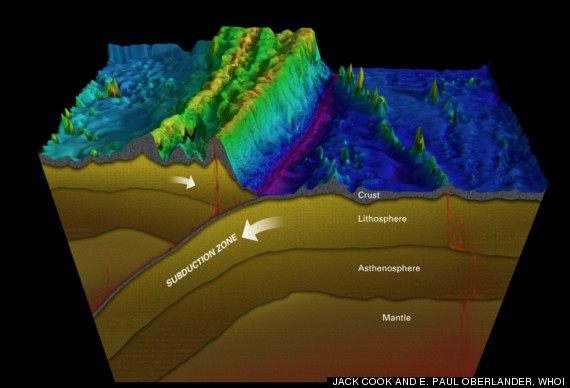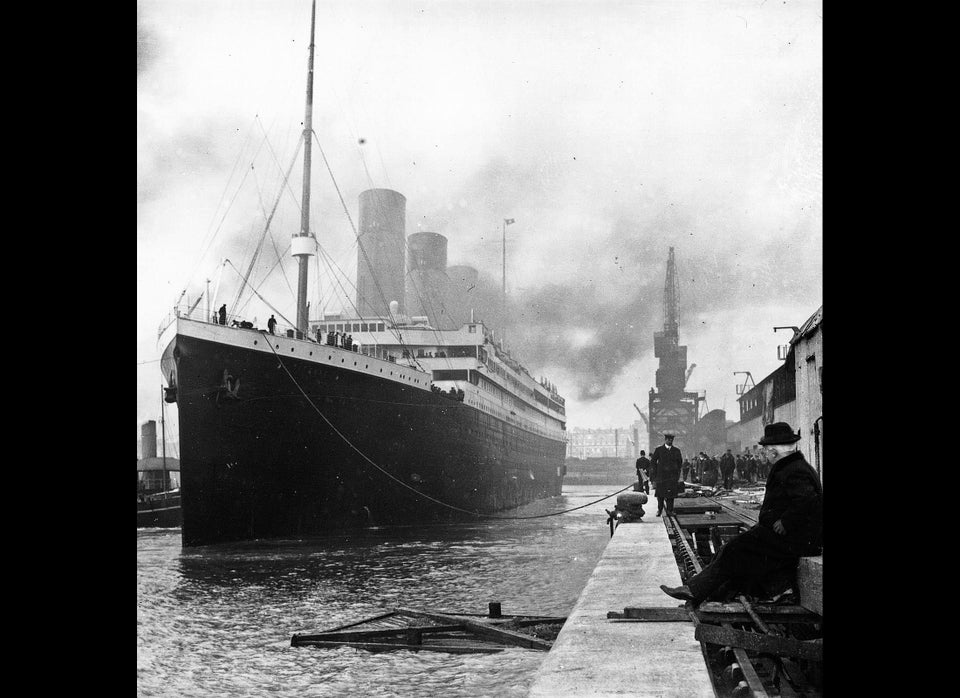A hybrid remotely operated vehicle (ROV) dubbed Nereus was lost while diving 6.2 miles (10 km) beneath the sea surface in a deep trench northeast of New Zealand on Saturday (May 10), representatives for the Woods Hole Oceanographic Institution have confirmed.
Part of the ROV, diving in the Kermadec Trench, may have imploded under pressures reaching a seam-bursting 16,000 lbs. per square inch (psi). (On Earth, humans are exposed to pressures of nearly 15 psi.)
The Kermadec Trench is the world's second-deepest trench, plunging 32,963 feet (10,047 meters) below the sea surface, second only to the Mariana Trench, which reaches 36,201 feet (11,034 m) beneath the surface of the Pacific Ocean.
The deep-diving vehicle, which operates remotely via an optical fiber tether and also as a free-swimming autonomous vehicle, was 30 days into a 40-day expedition to explore the deep-ocean trench aboard the research vessel Thomas G. Thompson. [See Photos of Nereus and Deep-Diving Expedition]
At 2 p.m. local time Saturday (10 p.m. Friday EDT), about seven hours into a planned nine-hour dive to the deepest part of the Kermadec Trench, researchers aboard the Thompson lost contact with the ROV. The researchers spotted floating debris, which was later identified as part of Nereus, suggesting the vehicle had imploded, said representatives for the Woods Hole Oceanographic Institution (WHOI) in Massachusetts, where the vehicle was designed and built in 2008. The ship's crew is collecting the debris to confirm its identity and hopefully reveal information about the implosion.
"Extreme exploration of this kind is never without risk, and the unfortunate loss of Nereus only underscores the difficulty of working at such immense depths and pressures," said Larry Madin, director of research at WHOI. "Fortunately, there was no human injury as a consequence of this loss."
The current expedition aimed to collect images and samples of unusual sea life that can survive the eye-popping pressures of the Kermadec Trench. The trench runs northeast from the North Island of New Zealand to the Louisville Seamount Chain and was formed by a process called subduction, in which the Pacific (tectonic) Plate dives beneath the Indo-Australian Plate.

The Kermadec Trench runs northeast from the North Island of New Zealand to the Louisville Seamount Chain. It is the second deepest oceanic trench in the world and formed by subduction, a geophysical process in which the Pacific tectonic plate is pushed beneath the Indo-Australian Plate.
This isn't Nereus' first gig, either. The ROV is one of just four submersibles ever to reach the ocean's deepest spot within the Mariana Trench, and had also explored the world's deepest known hydrothermal vents in the Caribbean Sea.
"Nereus helped us explore places we've never seen before and ask questions we never thought to ask," said Timothy Shank, a biologist at WHOI. "It was a one-of-a-kind vehicle that even during its brief life, brought us amazing insights into the unexplored deep ocean, addressing some of the most fundamental scientific problems of our time about life on Earth."
The Kermadec Trench runs northeast from New Zealand's North Island to the Louisville Seamount Chain. It is the second-deepest oceanic trench in the world and formed by subduction, a geophysical process in which the Pacific Plate is pushed beneath the Indo-Australian Plate.
Funding for the $8 million Nereus project came from the National Science Foundation, the Office of Naval Research, the National Oceanic and Atmospheric Administration, the Russell Family Foundation and WHOI.
Follow Jeanna Bryner on Twitter and Google+. Follow us @livescience, Facebook & Google+. Original article on Live Science.
Copyright 2014 LiveScience, a TechMediaNetwork company. All rights reserved. This material may not be published, broadcast, rewritten or redistributed.
Our 2024 Coverage Needs You
It's Another Trump-Biden Showdown — And We Need Your Help
The Future Of Democracy Is At Stake
Our 2024 Coverage Needs You
Your Loyalty Means The World To Us
As Americans head to the polls in 2024, the very future of our country is at stake. At HuffPost, we believe that a free press is critical to creating well-informed voters. That's why our journalism is free for everyone, even though other newsrooms retreat behind expensive paywalls.
Our journalists will continue to cover the twists and turns during this historic presidential election. With your help, we'll bring you hard-hitting investigations, well-researched analysis and timely takes you can't find elsewhere. Reporting in this current political climate is a responsibility we do not take lightly, and we thank you for your support.
Contribute as little as $2 to keep our news free for all.
Can't afford to donate? Support HuffPost by creating a free account and log in while you read.
The 2024 election is heating up, and women's rights, health care, voting rights, and the very future of democracy are all at stake. Donald Trump will face Joe Biden in the most consequential vote of our time. And HuffPost will be there, covering every twist and turn. America's future hangs in the balance. Would you consider contributing to support our journalism and keep it free for all during this critical season?
HuffPost believes news should be accessible to everyone, regardless of their ability to pay for it. We rely on readers like you to help fund our work. Any contribution you can make — even as little as $2 — goes directly toward supporting the impactful journalism that we will continue to produce this year. Thank you for being part of our story.
Can't afford to donate? Support HuffPost by creating a free account and log in while you read.
It's official: Donald Trump will face Joe Biden this fall in the presidential election. As we face the most consequential presidential election of our time, HuffPost is committed to bringing you up-to-date, accurate news about the 2024 race. While other outlets have retreated behind paywalls, you can trust our news will stay free.
But we can't do it without your help. Reader funding is one of the key ways we support our newsroom. Would you consider making a donation to help fund our news during this critical time? Your contributions are vital to supporting a free press.
Contribute as little as $2 to keep our journalism free and accessible to all.
Can't afford to donate? Support HuffPost by creating a free account and log in while you read.
As Americans head to the polls in 2024, the very future of our country is at stake. At HuffPost, we believe that a free press is critical to creating well-informed voters. That's why our journalism is free for everyone, even though other newsrooms retreat behind expensive paywalls.
Our journalists will continue to cover the twists and turns during this historic presidential election. With your help, we'll bring you hard-hitting investigations, well-researched analysis and timely takes you can't find elsewhere. Reporting in this current political climate is a responsibility we do not take lightly, and we thank you for your support.
Contribute as little as $2 to keep our news free for all.
Can't afford to donate? Support HuffPost by creating a free account and log in while you read.
Dear HuffPost Reader
Thank you for your past contribution to HuffPost. We are sincerely grateful for readers like you who help us ensure that we can keep our journalism free for everyone.
The stakes are high this year, and our 2024 coverage could use continued support. Would you consider becoming a regular HuffPost contributor?
Dear HuffPost Reader
Thank you for your past contribution to HuffPost. We are sincerely grateful for readers like you who help us ensure that we can keep our journalism free for everyone.
The stakes are high this year, and our 2024 coverage could use continued support. If circumstances have changed since you last contributed, we hope you'll consider contributing to HuffPost once more.
Already contributed? Log in to hide these messages.

